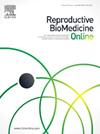Cycle management in frozen embryo transfer: the best of all worlds?
IF 3.7
2区 医学
Q1 OBSTETRICS & GYNECOLOGY
引用次数: 0
Abstract
A comprehensive review of the current literature was conducted to examine the available endometrial preparation methods prior to frozen embryo transfer (FET), and their impact on pregnancy outcomes and obstetric complications. Endometrial preparation for FET can be broadly categorized into natural and artificial cycles. While artificial cycles have historically been favoured for their flexibility, natural cycles are increasingly preferred due to their association with lower rates of obstetric and neonatal complications. However, in patients lacking ovarian function (e.g. menopausal women or those with premature ovarian insufficiency), artificial cycles remain the only viable option, necessitating further optimization. Flexibility within natural cycles can be achieved by varying the timing of ovulation induction or luteal phase initiation. Additionally, individualized luteal phase support with tailored progesterone supplementation is becoming standard practice in both natural and artificial cycles. Natural cycle FET is associated with fewer obstetric complications, and should be prioritized in patients with intact ovarian function. Further optimization of preparation protocols can be achieved through adequate follicular phase monitoring and personalized luteal phase support.
冷冻胚胎移植的周期管理:世界上最好的方法?
对目前的文献进行了全面的回顾,以检查冷冻胚胎移植(FET)前可用的子宫内膜准备方法,以及它们对妊娠结局和产科并发症的影响。FET子宫内膜准备大致可分为自然周期和人工周期。虽然人工周期历来因其灵活性而受到青睐,但由于其与产科和新生儿并发症发生率较低的关系,自然周期越来越受到青睐。然而,对于缺乏卵巢功能的患者(如绝经期妇女或卵巢功能不全),人工周期仍然是唯一可行的选择,需要进一步优化。自然周期内的灵活性可以通过改变排卵诱导或黄体期起始的时间来实现。此外,个性化黄体期支持与量身定制的黄体酮补充正在成为标准的做法,在自然和人工周期。自然周期FET与产科并发症较少相关,应优先用于卵巢功能完整的患者。通过充分的卵泡期监测和个性化的黄体期支持,可以进一步优化制备方案。
本文章由计算机程序翻译,如有差异,请以英文原文为准。
求助全文
约1分钟内获得全文
求助全文
来源期刊

Reproductive biomedicine online
医学-妇产科学
CiteScore
7.20
自引率
7.50%
发文量
391
审稿时长
50 days
期刊介绍:
Reproductive BioMedicine Online covers the formation, growth and differentiation of the human embryo. It is intended to bring to public attention new research on biological and clinical research on human reproduction and the human embryo including relevant studies on animals. It is published by a group of scientists and clinicians working in these fields of study. Its audience comprises researchers, clinicians, practitioners, academics and patients.
Context:
The period of human embryonic growth covered is between the formation of the primordial germ cells in the fetus until mid-pregnancy. High quality research on lower animals is included if it helps to clarify the human situation. Studies progressing to birth and later are published if they have a direct bearing on events in the earlier stages of pregnancy.
 求助内容:
求助内容: 应助结果提醒方式:
应助结果提醒方式:


